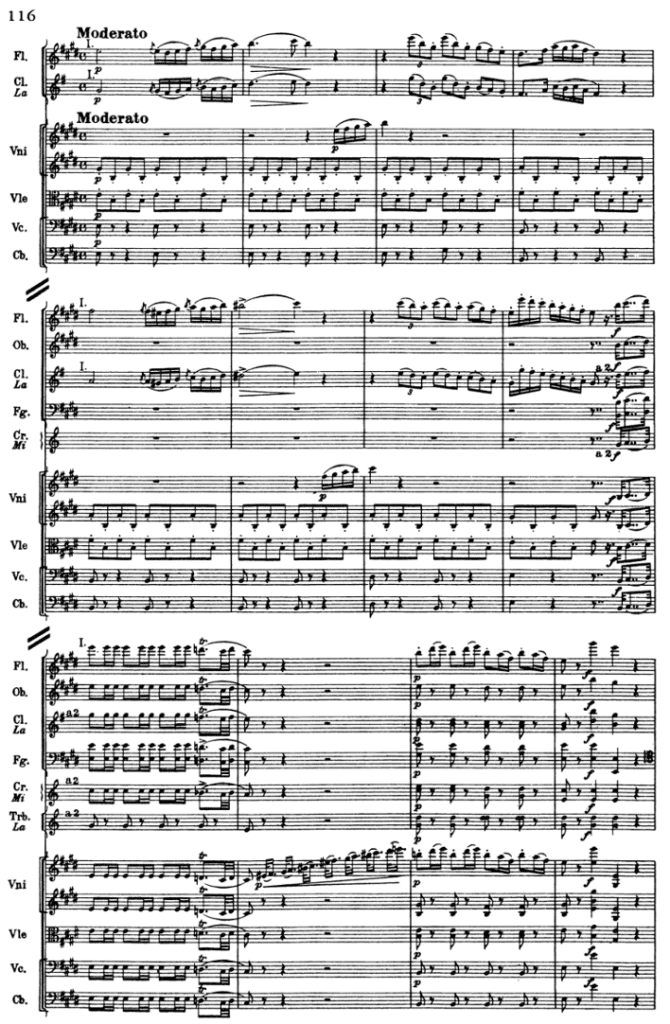I’m excited to launch a series of performance tips and background information on orchestral excerpts for the flute! My intention is to hit all of the major excerpts (and then some) over the course of the next couple of years.
I decided to start with the excerpt from Rossini’s Barber of Seville for no particular reason, other than it was part of our ensemble auditions last semester and I did a presentation on it for studio class (hint: you can recycle materials! 🙂 ).
If you take away anything from this post, let it be that the context in which an excerpt appears. It should determine the emotion with which you play, dynamics, articulation, and much more. As such, here is the background information and context of the Barber of Seville excerpt matters.
The Barber of Seville is the first comedy in a trilogy by Pierre Beaumarchais (1732-1799) and was written around 1765. It’s considered a prequel to the second installment in the trilogy which you’re likely familiar with – the Marriage of Figaro (made famous by Mozart). The third book, The Guilty Mother, is not as well known. It was also set as an opera by Darius Milhaud in 1966, but it unfortunately never made its way into the standard repertoire and is rarely performed.
Rossini’s setting of The Barber of Seville premiered in Rome in 1816, with Cesare Sterbini as the librettist. Like most operas, it has a crazy story that’s a bit hard to follow, but here you go (buckle up!).
Rosina (the main female role) is Don Bartolo’s (the doctor – consider him the “bad guy”) ward. In order to prevent Rosina from marrying someone else, the doctor locks her up so that he can be the one to marry her.
Our “prince” of the story is Count Almaviva, who is also in love with Rosina. He introduces himself to her through a note as “Lindoro” so her love is not influenced by his title or money. The only problem is that since Rosina is locked away, they can’t actually meet each other in-person (though they have managed to pass a lot of notes back and forth).
Enter Figaro, the barber. He is also an old friend and servant of the Count, though he is now employed by the doctor. Figaro agrees to help the Count seduce Rosina (for a fee, of course), and they deduce a plan to disguise the Count as a drunk soldier seeking lodging at the doctor’s house so he can actually meet Rosina.
Meanwhile…. The doctor knows that he’s much too old for Rosina. He is informed by his friend Don Basilio, a voice teacher, that the Count has been seen in Seville and has his heart set on marrying Rosina. In order to prevent Rosina from marrying the Count, Don Basilio and the doctor decide that the doctor will marry Rosina the next day. They also decide to spread rumors about the Count around town so that Rosina loses interest in him.
The Count appears at the doctor’s house dressed as a drunk soldier to see Rosina. While he is able to reveal to her that he is her secret admirer, the plan backfires and the Count nearly escapes getting arrested.
Act 2
The Count disguises himself again, but this time as a voice teacher, claiming to be subbing for the “ill” Don Bartolo. Figaro yet again helps the Count by coming to the doctor’s house to give him a haircut as a distraction. Figaro also manages to steal the key to Rosina’s balcony. However, the plan goes south yet again when the doctor realizes the Count is the substitute voice teacher, and now he is really mad. He decides he’ll marry Rosina that evening.
Trying to get to Rosina, the Count, and Figaro successfully climb a ladder into her balcony. Rosina and the Count sing a duet about their love and passion for one another. They are caught, but this time the Count manages to bribe the doctor so that he and Rosina can have a happy ending together (though if you’ve seen the Marriage of Figaro you know their marriage is far from a happy ending).
The flute’s excerpt is from one of the two most famous selections from the opera, “Una voce poco fa qui nel cor mi risuono” (a voice a little while ago here resounded in my heart) from Act 2. This is the aria Rosina sings after reading a note from the Count (whom, at the time, she knows by his code name Lindoro). This letter fills her with joy as she sings of her love for him and describes some of the characteristics that make her such a great catch. Rosina also sings about what will happen to someone who mistreats her at the end of the aria.
I recommend you listen to the aria in full to completely grasp the context of our excerpt. I like this recording from the Lyric Opera of Chicago:
Our excerpt appears right after Rosina sings “Yes, Lindoro shall be mine, I swear it, I will win. Yes, Lindoro shall be mine; I swear it, yes.” After the flute finishes the excerpt, she begins to sing about characteristics of her personality and then a warning to those who do not give her what she wants.

There are a number of things to consider when playing this excerpt. First, we do not play it alone – as you can see below, we begin this excerpt with the clarinet and are eventually joined by the orchestra.

The first thing to consider is the beginning dynamic. Right before we start the excerpt, the orchestra ends on an accented half note followed by a quarter rest. Make sure the flute begins the excerpt at a nice piano that is quite contrasted with the forte note the orchestra just played.
Take care to blend with the clarinet (and eventually the whole orchestra) – use less vibrato and rubato, and be sure to match your articulation and intonation with the clarinet. The flute and clarinet should also be careful to match the length of the grace notes. If you have a clarinet friend, I strongly recommend asking them to play through this excerpt with you so you can get used to the fact that it’s not a solo and practice these elements.
I advise you to write the violin’s rhythm in your part after the trill and termination (third system, second measure) to assure you come in exactly with the rest of the orchestra in the next measure – the violin’s rhythm can be tricky to count in this bar.
You’ll also notice from the score that the flute and first violins are the only instruments with the melody in the third bar of the third system. As such, make sure the piano dynamic projects and that you listen to how short the violins play the staccato notes to match their articulation.
After we play, Rosina starts singing about the good characteristics of her personality. Therefore, those last two notes should feel like a confident statement that attests to her personality in a prima-donna way (since this is a quite famous aria). They should also convey the joyous excitement Rosina feels regarding her relationship with the Count.
Let me know if you have any other tips or tricks to keep in mind while playing the excerpt from Rossini’s Barber of Seville!
Photo credits: WikiMedia.
